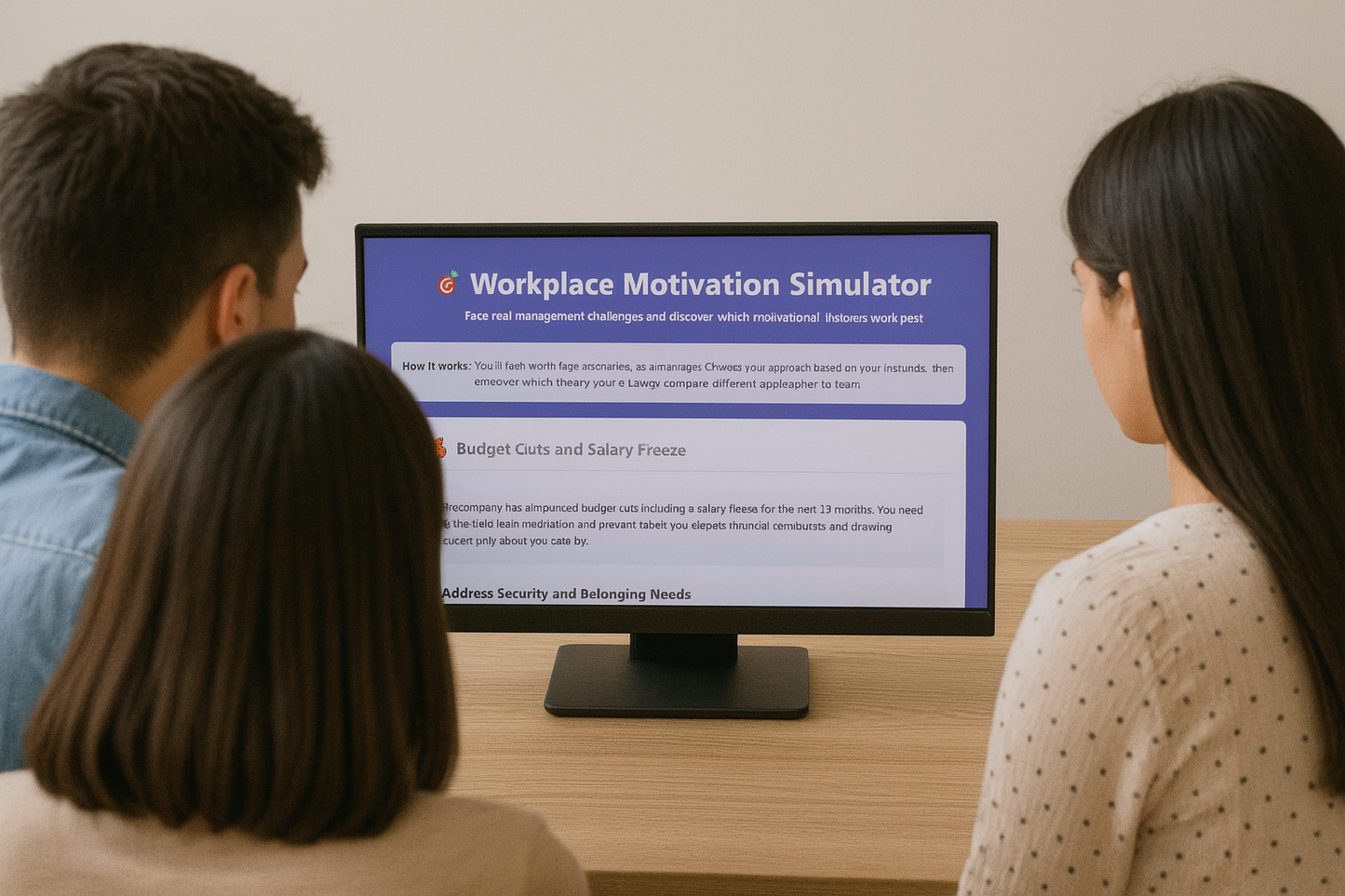BIZ-OMICS
Business Studies: Motivational Theorist Simulator
Business Studies: Motivational Theorist Simulator
Couldn't load pickup availability
This interactive simulation delivers rich educational value for learners studying motivation in the workplace, particularly in Business, Psychology, and Human Resources contexts. The focus is: Maslow’s Hierarchy of Needs, Herzberg’s Two-Factor Theory, and Taylor’s Scientific Management.
Students will:
Understand and Apply Motivational Theories
Learn Maslow’s Hierarchy of Needs, Herzberg’s Two-Factor Theory, and Taylor’s Scientific Management through real-world managerial challenges.
Develop insight into how different approaches lead to varying levels of effectiveness in areas like employee satisfaction, retention, and productivity.
Develop Analytical and Critical Thinking Skills
Compare and evaluate the impact of theoretical approaches.
Reflect on which strategies are more effective in different workplace scenarios and why.
Engage in Scenario-Based Learning
Face realistic, complex management problems.
Make decisions and receive immediate, theory-driven feedback with effectiveness metrics.
Also, please find the...
Management Theories Study Guide
A teaching and revision tool for motivational theories in Business Studies.
Our Management Theories Study Guide is not just another wall of text—it’s a fully interactive, exam-board ready tool designed specifically for Business Studies students. Whether you’re studying with AQA, Edexcel or OCR, this guide adapts to you, with filters that instantly highlight the theories you need.
Each motivational theory comes alive in its own dedicated section. Click between Taylor, Maslow, Herzberg, Mayo, McClelland, Vroom, Locke and Peters with smooth tabbed navigation. No more endless scrolling—just the content you need, when you need it. Every theory is broken down into background history, core principles, and modern-day business applications. You’ll even find real-world examples like Amazon, Google and Starbucks showing how these theories play out in today’s companies—exactly the kind of applied context examiners love.
But this study guide doesn’t stop at description. It goes deeper with Critical Evaluation & Limitations, giving you the analytical edge. From Maslow’s cultural bias to Herzberg’s research weaknesses, you’ll be equipped to add evaluation points that take your answers into the top mark bands. At the end, the Theory Integration & Synthesis section ties everything together, showing how these theories complement each other and how managers mix approaches in real businesses. It’s the synoptic perspective examiners look for—and now it’s right at your fingertips.
Share


